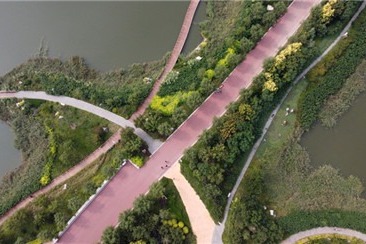Yangtze River's warming headwaters to present challenges, researchers say


XINING — The headwaters of the Yangtze, China's longest river, are expected to become warmer and more humid, which will pose multiple challenges, Chinese researchers have warned.
They recently conducted a scientific expedition in the headwater regions of the Yangtze and Lancang rivers in Northwest China's Qinghai province.
Under moderate emission scenarios, average temperatures in the Yangtze's source area could rise by 2 C to 4 C by the end of this century, with precipitation potentially increasing by 10 percent to 30 percent, said Qin Pengcheng, a senior engineer from the Yangtze River Basin's meteorological center.
The headwaters of the Yangtze are located on the Qinghai-Tibet Plateau, with an average elevation of over 4,500 meters. The plateau, known as "the roof of the world", is also the birthplace of the Yellow River, the second-longest river in China, and the Lancang, which is known as the Mekong after it flows out of China.
The warming and increased humidity at the source area of the Yangtze have raised risks, including glacier shrinkage and increased water and sediment flow.
"Accelerated glacier retreat in the region is evident, with iconic glaciers showing gradual shrinkage," said Fan Yue, a member of the scientific expedition.
Additionally, extreme precipitation events in the upper reaches of the Yangtze have been increasing in frequency and intensity. In August last year, the Zhimenda hydrological station recorded the biggest flood since its establishment in 1956. It caused severe damage to local roads.
From July 1 to 22 this year, precipitation in the Yangtze source area was 53.5 percent above average for the same period in previous years.
While China's conservation efforts have improved biodiversity in the region, experts called for a global response and joint measures to tackle global warming, along with increased attention and research on the Yangtze's headwaters.
Vital components of the Qinghai-Tibet Plateau ecosystem, the headwater regions of the Yangtze and Lancang rivers play a crucial role in safeguarding water resources, protecting biodiversity and ensuring ecological stability.
Annual scientific expeditions to the source of the Yangtze River have been conducted since 2012.
Xinhua
- Yangtze River's warming headwaters to present challenges, researchers say
- Anti-China content fabricated in applications for overseas study
- Platform vows to protect delivery riders' rights
- Separatist spy networks dismantled
- Heavy rainfall to cause more flooding in north
- Researchers focus on targeted efforts





































